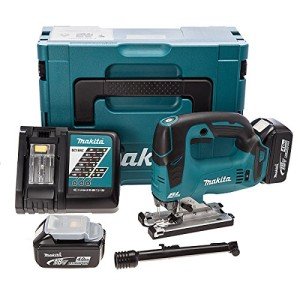Page Information

본문
 The Workhorse of the Shop Power Tools
The Workhorse of the Shop Power ToolsHand-held power tools are powered by internal combustion, electricity or compressed air. They are used to cut, drill, sanding or grinding materials.
 One of the most important power tools that every woodworker should own is a table saw, which makes quick work of nearly any cutting task. Also consider a miter-saw stand as well as a drill/driver kit.
One of the most important power tools that every woodworker should own is a table saw, which makes quick work of nearly any cutting task. Also consider a miter-saw stand as well as a drill/driver kit.Table Saw
A table saw is the workhorse of the shop site power Tools tools and may be the most versatile tool for woodworking. It can rip stock cross-cutting it, miter it and even dado or rabbet it. It is also able to cut angled surfaces to create frames, chests, or planters.
The saw has a large circular blade which spins at high speeds. The table has large dimensions that support the stock while it passes through the blade. The saw blade is guarded by guards for the blade that help keep the wood from being caught and possibly kicked back at the operator. The saw is further protected by the splitter or riving blade, which is a vertical projection that is located directly behind the blade that can take the form of a pin or fin.
Contractor-style tablesaws are equipped with a larger motor that is hinged off the rear and drives the blade using two or more rubber V-belts. These saws are mostly used by carpenters, however they can also be found in shops for home use. They have more features than portable saws, for instance a sliding miter table.
Table saws that are smaller have smaller motors, lighter in weight that is usually belt driven. These saws are geared more towards hobbyists and domestic use. Many have an adjustable mitertable that allows users to make intricate cuts, such as those needed for picture or mirror frames, or boxes drawers, cases, and frames.
Utilizing a table saw correctly is essential to avoid injury. When performing rip cuts, always remain to the left and keep your hands from the saw's blade. It is important to utilize an extension stick or a guide block when cutting, particularly in work environments where HSE guidelines require you to remain at a minimum of a hand span away from the blade.
A lot of woodworking projects require tapered legs, and the simplest and fastest way to cut these is with a table saw and a simple adjustable tapering jig that you can build at home. A tapering jig can be adjusted to any angle between 15 and 0 degrees, which allows you to cut any set of tapered legs for furniture such as tables or cabinets in your shop.
Bandsaw
A bandsaw is a tool to cut wood and metal into different shapes. It's an excellent tool for customizing fabrication. It's also a useful best online tool store for woodworking projects like furniture and cabinetry. The saw is able to be used to cut circular cuts, including circles, and is able to cut through many different materials, including ice.
There are two kinds of bandsaws: horizontal and horizontal. Vertical bandsaws are used for cutting freehand and excel at resawing and curved cuts, while horizontal bandsaws excel at cutting straight and cut angles. The saw can operate manually or through powered feed systems. Manual bandsaws require the user manually lower and raise the blade to cut, whereas power-fed systems are more efficient.
When using the bandsaw, it's essential to prioritize safety. Always wear protective gear, such as safety goggles and ear protectors to protect against sawdust and noise. To prevent accidents and injuries, keep your feet and hands clear of the blade. It is also crucial to correctly set the saw to ensure safety, making sure that the blade is secure and aligned properly and that the guides are set properly.
Depending on the material you're cutting it might be necessary to adjust the saw speed and feed rate in order to get optimal results. Regular maintenance and adjustments to tension of the blade and tracking will ensure your bandsaw makes accurate and precise cuts while prolonging its lifespan.
The blade on the bandsaw is typically constructed from high-quality steel that's been heat treated to resist the stresses and fatigue of frequent use. The teeth of the saw are welded on which gives it a distinctive design and protecting it from damage caused by an abrupt shock.
The throat depth of bandsaws determines the length of the piece of lumber it can cut. The larger throat depths permit you to cut larger pieces of lumber and are useful for resawing and ripping, which are both methods that require cutting across the grain. It's also worth noting that some bandsaws feature tilting tables that can be useful for making certain types of angled cuts as well as recycling scrap wood.
Dust Collector
Woodworking tools produce a lot dust and chips, which need to be removed to safeguard your health and maintain the cleanliness of your shop as well as the durability of your equipment. The kind of collector you require will depend on the size and number of power tools that you use in your woodshop as well in the frequency with which they are used. The most effective dust collection systems for woodworking provide superior filtration that removes small particles and help you breathe easier, healthier and more comfortably while you work.
No matter if you're a one-man workshop or a large production woodworking facility, Nederman has dust collection systems that meet your needs. Our woodworking dust collection, waste management and combustible dust solutions combine care for the environment and improvements in productivity and best quality tools of machines.
There are many types of woodshop dust collection systems on the market, including:
A basic dust extractor can replace your shop vacuum. The units connect to your power tools with an hose that connects to the dust port on the machine. When you switch on your device the hose will be activated and draws dust and debris from your work area.
The majority of dust extractors, contingent on the model you select, come with an HEPA filtering to eliminate small dust particles that could cause respiratory issues in the course of time. They also have a higher CFM airflow (cubic feet per minutes) to move more air. They could also include an airspeed indicator and a system which automatically cleans the filters.
If you have a large shop or want to be able to utilize your woodworking equipment on the move, a portable dust collector equipped with a rechargeable source of power tool shop and an integrated connector that connects directly to the power tool is a great option. These units are easy to transport and have the capacity to handle multiple tools at the same time. They are small and feature a caster-base. They also have an empty bag or filter for easy emptying.
If you're an experienced woodworker or contractor, you might require a more efficient dust collection system. These are more expensive than an extractor, but provide a wider range of filtration options and can be hung on the wall or placed in their own space. These units are suitable to clean up drywall, sanding, and other demolition projects, as well as woodworking.
Planer
The planer is a power tool that no woodshop should ever be without. It's not the most stunning or flashy tool, but it can make a huge impact on your ability to transform rough lumber into beautiful and useful projects. It can be used to cut boards to a certain thickness, and it can be used on both hardwoods and softwoods. It can also be very helpful to tackle unwieldy, knotty or twisted stock that is impossible to work with using hand tools.
A portable planer of high quality is well worth the admission price to any woodworking workshop. You might be able locate a planer for sale at a reasonable price, but you must pay attention to the condition and the infeed and outfeed table. These elements will determine the performance of your planer and whether it will last for a long period before you have to replace components. If the cutter head is not of the highest quality, it will soon wear out and you may need to replace it within the shortest amount of time.
Many people confuse the planer and the jointer, however they are not the same machine. A jointer will make an entire board straight and flat, whereas the planer will cut the boards down to a certain thickness. Some woodworkers even use the two machines together to complete an undertaking, but both are essential for any workshop that handles rough lumber on a regular basis.
A commercial-grade planer is a great purchase if you are looking to work with wood professionally and are in search of reliable equipment. These machines are designed to be employed in situations where speed of production is more important than the surface finish. These machines will save you a deal of time, but you should be cautious not to over-load them. They could burn out. They will also need to be maintained in a way that ensures that they are operating in a safe manner. A good shop with tools maintenance routine will go a long way toward extending the life of your planer.
- Prev15 Of The Best Pinterest Boards Of All Time About Truck Wreck Attorney 24.12.15
- Next10 Things You've Learned From Kindergarden To Help You Get Started With Panels For Upvc Doors 24.12.15
댓글목록
등록된 댓글이 없습니다.
